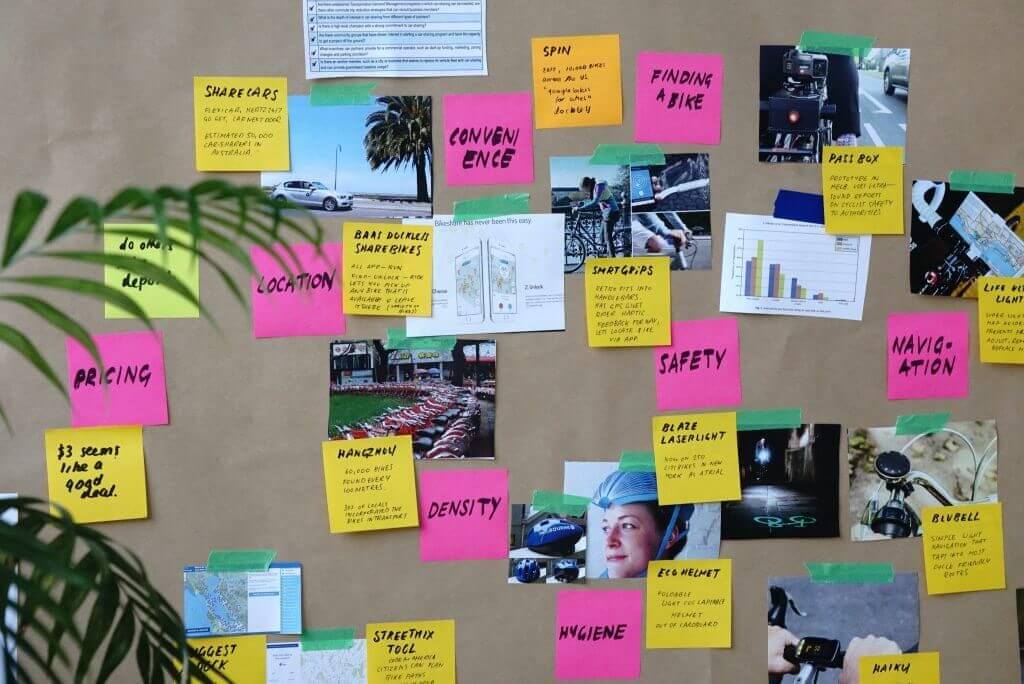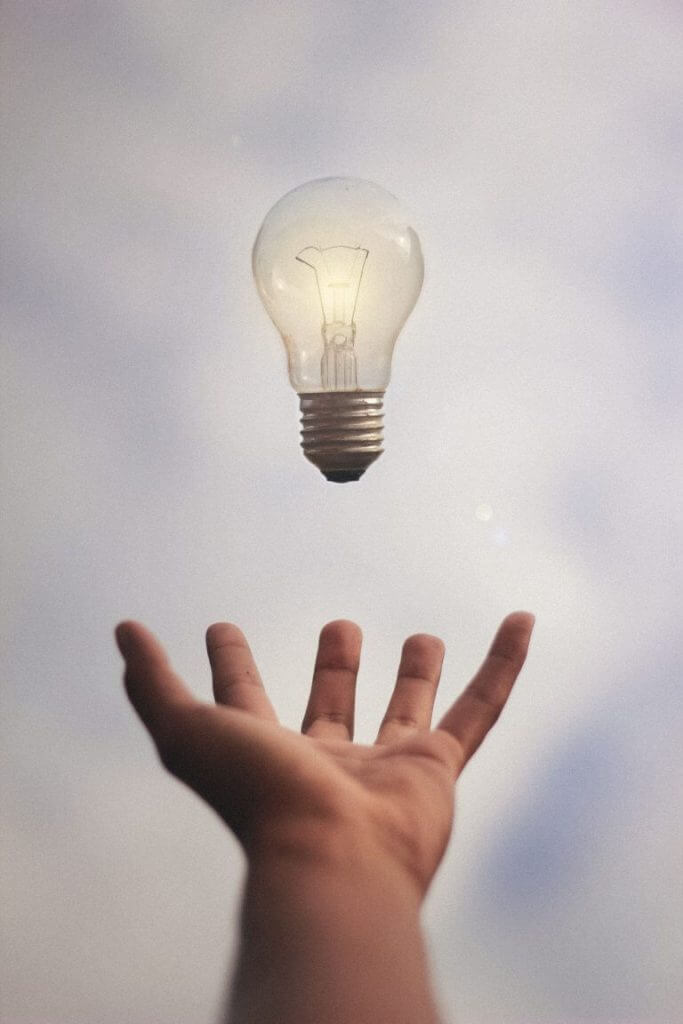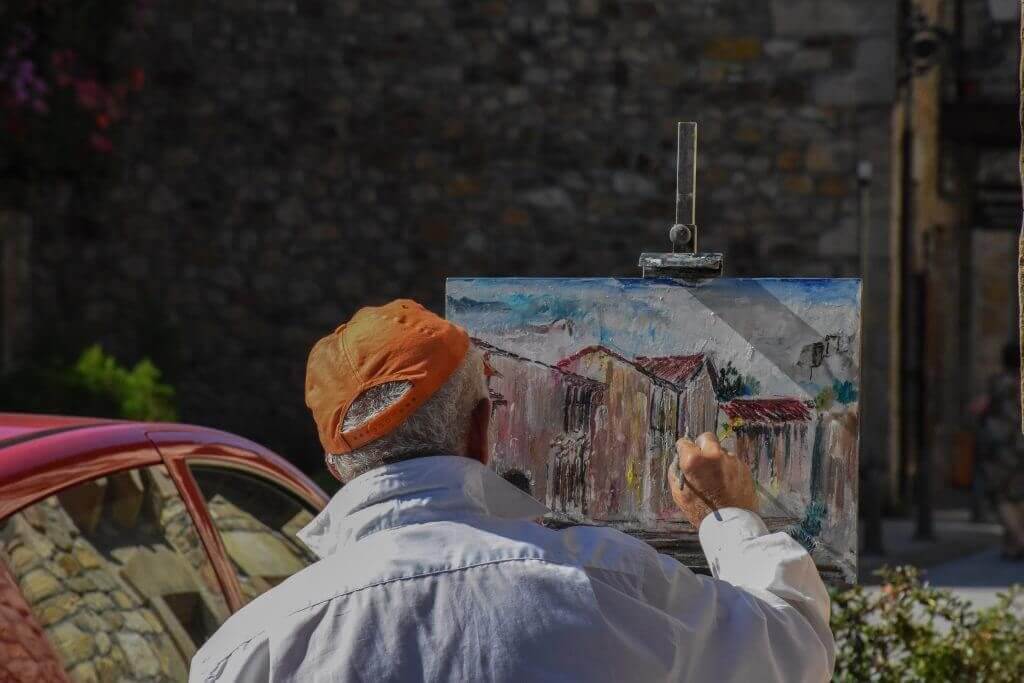One of the biggest advantages humans have over other animals is our ability to think creatively.

Many of us rely on creativity to do our jobs.
Unfortunately, it can be difficult to get the creative juices flowing sometimes, and many of us need all the help we can get.
Modafinil offers a unique set of benefits that can be used to increase creativity as well as boost our workflow and production efficiency.
This is great for writers, artists, musicians, and anybody working on finding a solution to a problem that isn’t immediately obvious.
We talk about how the creative process works in the brain and then combine this with modafinil’s many benefits. The goal is to use modafinil to boost the creative process, making it more efficient, and more reliable.

What Is Creativity?
Before we get into how we can use modafinil for creativity, it’s fitting that we first get a good understanding of what creativity really is.
Creativity is the process of bringing something new into being. It turns something that’s only in the imagination into something that exists in the world around us.
In many cases, this is something tangible like a painting or article but can also include less tangible things like music or blockchain technology.
Exclusive offer to all our readers: ModafinilXL offers a free sample pack of generic modafinil from India delivered by mail straight to your doorstep. It's already in your cart >>>
Modafinil is an excellent product; it really helps give me an extra boost when working two jobs; one late night job. It also helps my mood and overall well being. No side effects, works like a charm.
Where Does Creativity Come From?
Creativity is a natural human phenomenon. The hardware contained in our brains is powerful enough to literally turn nothing into something. The actual location in which this thought occurs is up for the philosophers of the world to debate.
We aren’t here to discuss the origins of the mind, and where thoughts originate, however, we can discuss the different types of thinking necessary for creativity to exist…

Convergent & Divergent Thinking
Creativity is an incredibly complex process. It’s a balance between a number of different regions of the brain. It’s driven by two main types of thinking, divergent and convergent thinking.
What does this mean?
According to the famous American Psychologist who coined the words, J. P. Guilford, convergent thinking is one of the two main ingredients needed for creative thinking. It’s the process used to solve problems that have a single answer.
Divergent thinking is the opposite of convergent thinking. It’s used to solve problems with many possible answers.
Searching for the Source of Creativity
Dr. George Land had a particular interest in the source of creativity and set out to find it.
He founded a research and consulting institute to study the enhancement of creative performance back in 1965.
Children are Inherently Creative
Much of Dr. Land’s research involved children because he noticed early on that children were programmed to have more creativity than adults.
He noticed that as people age, they learned to become less creative, finding shortcuts in things, and turning their heads away from creative instincts more often.
In one of his studies, he grouped 1600 children into their respective ages and gave them all a creativity test he had previously devised for NASA.
His results included the following:
- 5-year-olds scored an average of 98%
- 10-year-olds scored an average of 30%
- 15-year-olds scored an average of 12%
- Adults (tested after the study had completed) score an average of 2%
He concluded that it’s not creativity that’s learned, its non-creative behavior that’s learned.
You can view one of his Ted talks here.

What to Do with This Information
Knowing that the human brain is inherently creative and that we develop non-creative behaviors as we age, the solution involves uncovering these creative thought processes.
This means that instead of learning how to be creative, we need to unlearn how NOT to be creative. This, of course, takes a bit of effort to do.
A professional bodybuilder didn’t get their body overnight. It was achieved through years of hard work and dedication that went into training. The same can be said for creativity.
The Creative Thought Process
The first step to retraining your brain to be creative is to understand the creative thought process.
There are four stages to this process:
Stage I: Preparation
The preparation stage involves identifying the problem that needs a creative solution and collecting the raw facts and materials needed for finding these new solutions.
This is the stage that modafinil is most helpful in terms of boosting the creative process.

Stage II: Incubation
This stage involves the unconscious thought process of finding a solution to a problem. This involves some time spent NOT thinking about the problem. It needs to sit in the subconscious and stew for a while.
Modafinil is not recommended for this stage.
Stage III: Illumination
The illumination stage is the ‘EUREKA’ moment when the creative solution presents itself. This is the stage we are trying to promote by setting up the preparation and incubation stage.
Modafinil isn’t recommended for this stage.

Stage IV: Verification
This is the final stage, where the eureka moment is investigated more closely to explore its validity.
This is another stage where modafinil can come in useful as a way to really explore the idea in more detail to identify where it needs improvement.
How Can Modafinil Help with Creativity?
Modafinil can be a very useful tool for promoting the creative process. Its main benefits are in the preparation stage (stage I) and the verification stage (stage IV). These are the stages that require the most grunt work and effort, while the other stages rely on natural cognitive processes.
Modafinil is useful because it can dramatically increase our ability to work productively, thus getting a lot more done than usual.
It delays the onset of fatigue, allowing us to work longer and harder.
Modafinil also increases dopamine concentrations in the brain, which are heavily involved in the process of learning and data collection.
However, it’s not always that simple. Knowing how modafinil affects dopamine, and how changes in dopamine affect the creative process can dramatically improve the effectiveness of using modafinil for supporting the creative thought process.
- Modalert 200mg
- Modvigil 200mg
- Waklert 150mg
- Artvigil 150mg
-
Modalert 200mg
-
Company
-
Core Ingredient
Modafinil
-
Price from
$0.53 in 7 days $2.99 in 3 days >
-
Dosage
Between
50 – 200 mg per day -
Coupons
Pay with crypto -20%ENJOYMXL10 for -10%
-
Good for
-
Alertness
-
Mental Focus
-
Agility
-
Energy
-
Motivation
-
-
Effect hours
-
Onset 1 hr.
-
Peak 6 hr.
-
Drop 2 hr.
- Buy Now
-
Modvigil 200mg
-
Company
-
Core Ingredient
Modafinil
-
Price from
$0.39 in 7 days > $2.99 in 3 days >
-
Dosage
Between
50 – 200 mg per day -
Coupons
Pay with crypto -20%ENJOYMXL10 for -10%
-
Good for
-
Alertness
-
Agility
-
Energy
-
Cognition
-
Motivation
-
-
Effect hours
-
Onset 2 hr.
-
Peak 5 hr.
-
Drop 3 hr.
- Buy Now
-
Waklert 150mg
-
Company
-
Core Ingredient
Armodafinil1
-
Price from
$0.59 in 7 days > $2.99 in 3 days >
-
Dosage
Between
50 – 150 mg per day -
Coupons
Pay with crypto -20%ENJOYMXL10 for -10%
-
Good for
-
Mental Focus
-
Agility
-
Energy
-
Cognition
-
Motivation
-
-
Effect hours
-
Onset 3 hr.
-
Peak 8 hr.
-
Drop 1 hr.
- Buy Now
-
Artvigil 150mg
-
Company
-
Core Ingredient
Armodafinil
-
Price from
$0.41 in 7 days > $2.99 in 3 days >
-
Dosage
Between
50 – 150 mg per day -
Coupons
Pay with crypto -20%ENJOYMXL10 for -10%
-
Good for
-
Mental Focus
-
Agility
-
Cognition
-
Motivation
-
-
Effect hours
-
Onset 2 hr.
-
Peak 6 hr.
-
Drop 2 hr.
- Buy Now

Modafinil & Dopamine
Patients suffering from conditions like ADD and ADHD (which have a characteristically poor ability to concentrate) have been shown to have LOW dopamine levels on average [1].
The conventional treatment for this condition is modafinil, Adderall, or Ritalin, all of which work to boost this dopamine to normal levels.
This allows them to focus much more easily, thus improving their ability to learn.
In healthy individuals, dopamine levels are generally not a problem.
When they take medications like modafinil that boost dopamine, levels go above normal. This places people in a state of intense focus and concentration temporarily. It can dramatically improve our ability to focus on a single task for several hours at a time.
High Dopamine
Modafinil increases dopamine while it’s active in the body.
It does this by decreasing the activity of a special protein complex found on the synapses that reabsorb used dopamine.
When this protein complex (known as DAT) is inhibited, dopamine concentrations begin to rise outside the synapses, causing increased effects.
High dopamine levels are not directly beneficial for the process of creativity, however, it’s highly beneficial during the data collection phase.
Modafinil for Stage I: Preparation
Due to an increase in dopamine levels, along with modafinil’s ability to delay fatigue, it’s best used during the preparation stage.
The preparation stage involves most of the hard work. This is where you need to identify the problem that requires a creative solution and do the research needed to figure out an answer or produce creative ideas.
If you’re writing a paper this means figuring out the goal of the paper and sifting through various forms of research to get all of your information together and organized.
If you’re looking to paint a picture or write some music, this may involve analyzing other similar works to get an idea of what you want to produce.
Modafinil is an EXCELLENT tool for this part of the process.
People that use modafinil often report spending 15 or 20 hours straight collecting and interpreting data.

Avoid Modafinil for The Next Two Stages of The Creative Process
There is a good reason for this, mostly involving modafinil’s effect on dopamine.
Low Dopamine & Creativity
Interestingly, LOW dopamine levels have actually been associated with improved creativity [2].
Yes, you heard me… low dopamine levels can improve creativity.
A recent study [2] investigated the findings of some older research that found that patients with Schizophrenic behaviors were generally more creative than healthy people [3].
It was then reasoned that low dopamine activity in a special region of the brain known as the thalamus was the best explanation for these findings.
Researchers noted that increased dopamine concentrations in the thalamus are beneficial for learning, and information gathering and retrieval, but hinder the process of “convergent thinking”, a key element of the creative process.
This is why stages 2 and 3 of the creative process, (incubation and illumination) are best achieved WITHOUT modafinil.
This is further enhanced if modafinil is taken during the preparation stage. It causes a rebound drop in dopamine directly following the dose, which helps the incubation and illumination stages.
Modafinil For Stage IV: Validation
Once you’ve had some insight and hopefully produced a “eureka moment” during stage III, it’s now time to validate the idea.
Modafinil comes in useful during this stage again because it involves more grunt work to test the idea and try to apply it.
This stage involves a lot of trial and error and can be very time-consuming depending on what the creativity is applied to.
Modafinil can be a great tool during this stage to spend a lot of time taking the idea to completion.
Some More Tips on Supporting the Creative Process
1. If You Want to be Creative, You Need to Hang Around With Creative People
You are essentially the sum of the 5 closest people in your life. Of course, this is a simplified statement, but it’s not far off.
As humans, we tend to imitate each other.
This is why people living in any given area of the world will all speak relatively similar compared to other areas of the world, or even the same country. You can always tell where someone spends most of their time if you’re familiar with the accent.
This goes for things like creativity as well.
If most of your friends and family aren’t creative people, it’s unlikely that you will be either.
One of the best ways to gain the desired attribute is to find people that have that attribute and hang around them as much as possible. This is also how mentorship works.
Seek out creative people through Meetup groups, attend conferences and talks, and go to places like art galleries or music festivals.
2. Search for Different Ways to do the Same Thing, Even if you Already Know a Shortcut
As mentioned earlier, we naturally have creative abilities when we’re born, but learn to not be creative by developing shortcuts.
Try tackling common day to day problems with new solutions to exercise your creative thinking.
Maybe you can look for an alternate way to work or build yourself that new desk instead of buying it.
3. Allow Yourself to be Wrong
This is a fundamental part of the creative process that often goes overlooked.
Part of the reason our brains learn to become less creative is an attempt to avoid being wrong. We find it embarrassing when really we should view it as something constructive.
There is no such thing as a bad idea, just building blocks for better ideas.

4. Seek Out Further Training
The more information and training you have, the higher your potential for creative output is. This is especially true when the nature of your training is diverse.
A great way to make creativity come more easily is to never stop learning. Take weekend courses, go for that Master’s degree, or take up a new hobby.
All forms of learning and any topic of learning is beneficial, as it allows you to pull ideas for a larger pool of knowledge.
Final Thoughts On Using Modafinil for Creativity
To summarize, modafinil can be an excellent tool for creativity if used the right way.
There are four stages to the creative process, modafinil is useful for stage I— the preparation stage.
This is where you sit down and look at the problem (or canvas) and figure out what information you need to find the answer. Modafinil will help you gather information for many hours.
Stages II and III are best done without modafinil. This is where you try not to think about the problem directly, and let your subconscious run its calculations. The idea will later come to you when you least expect it.
Stage IV is again a good time to use modafinil. This is where you validate the idea, and see how far you can take it.
Overall, modafinil can be a great tool to use during the creative process. Whether you’re painting, writing, or searching for an answer to a difficult question, embracing the way our mind works and leveraging tools like modafinil can make the creative process much more achievable.
References
- Li, D., Sham, P. C., Owen, M. J., & He, L. (2006). Meta-analysis shows significant association between dopamine system genes and attention deficit hyperactivity disorder (ADHD). Human molecular genetics, 15(14), 2276-2284.
- Chermahini, S. A., & Hommel, B. (2010). The (b) link between creativity and dopamine: spontaneous eye blink rates predict and dissociate divergent and convergent thinking. Cognition, 115(3), 458-465.
- Eysenck, H. J. (1993). Creativity and personality: Suggestions for a theory. Psychological inquiry, 4(3), 147-178.





